Adverse weather conditions often present challenges in physical training, and the Army Combat Fitness Test (ACFT) is no exception. As soldiers prepare for the demands of modern warfare, the question of whether one can effectively complete the ACFT in the rain becomes pertinent.
Rain adds an element of unpredictability, raising concerns about safety, equipment performance, and overall test efficacy. Understanding the implications of inclement weather on ACFT performance is crucial for soldiers and fitness instructors alike. This article explores the feasibility, precautions, and adaptations necessary for soldiers to navigate the ACFT amidst rainfall, ensuring readiness in all environments.
What Is the ACFT Policy About the Weather Conditions?
[tds_note]The Army Combat Fitness Test (ACFT) is a test that measures the physical readiness of soldiers in the United States Army. It is designed to assess the strength, endurance, agility, and mental toughness of soldiers under combat conditions. However, like any outdoor physical activity, it can be affected by weather conditions. This article will explore the ACFT policy regarding weather conditions.[/tds_note]
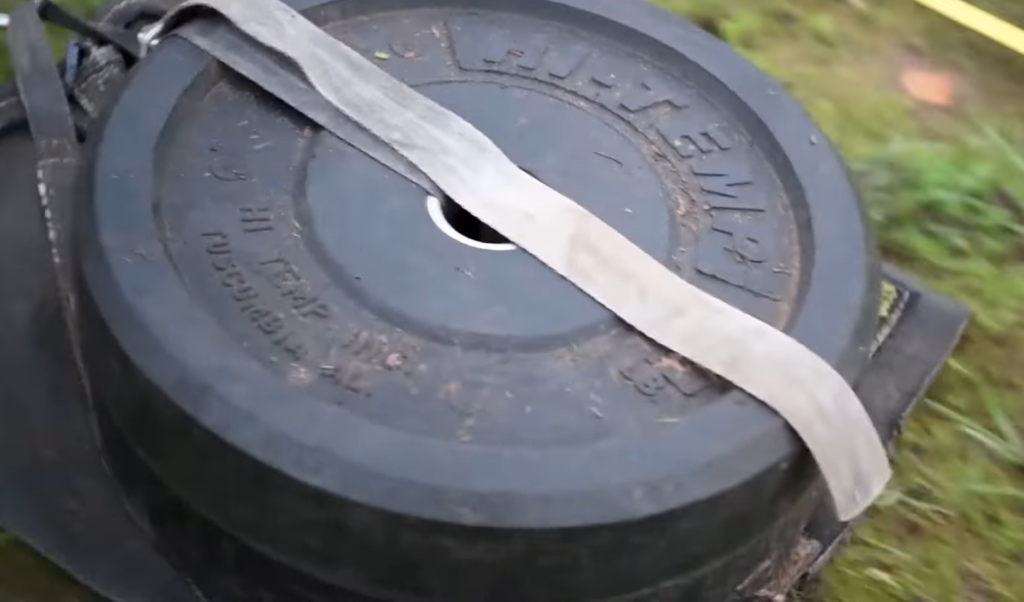
Weather Conditions and the ACFT
The ACFT is designed to be conducted outdoors, in conditions that mimic the unpredictability and harshness of the battlefield. As such, the test is typically conducted regardless of weather conditions, unless those conditions present a safety risk to the soldiers taking the test.
The ACFT policy states that the test can be conducted in any weather condition that is safe for physical activity. This includes hot and cold weather, as well as rain or snow. However, the policy also acknowledges that extreme weather conditions can pose a health and safety risk to soldiers [1].
Extreme Weather Conditions
Extreme weather conditions, such as severe thunderstorms, high winds, extreme heat or cold, or other hazardous conditions, can pose a significant risk to soldiers taking the ACFT. In such cases, the ACFT policy allows for the test to be postponed or canceled.
The decision to postpone or cancel the ACFT due to extreme weather conditions is typically made by the commander of the unit conducting the test. The commander is responsible for monitoring the weather conditions and making a decision based on the safety of the soldiers.
Safety Measures
The ACFT policy outlines several safety measures that should be taken in case of extreme weather conditions. These include:
- Monitoring weather conditions: Commanders are required to monitor the weather conditions leading up to the ACFT and make a decision based on the forecast;
- Providing appropriate gear: In case of cold or wet weather, soldiers should be provided with appropriate gear to protect them from the elements;
- Ensuring hydration: In hot weather, commanders should ensure that soldiers are properly hydrated and have access to water during the test;
- Medical support: Medical personnel should be present during the ACFT to provide immediate medical support in case of any health issues due to the weather conditions;
- Evacuation plan: An evacuation plan should be in place in case of sudden changes in weather conditions during the test;
The Field Space and Equipment For the ACFT
The ACFT is a multifaceted test requiring a considerable amount of space and specialized equipment. Each of the six events — deadlift, standing power throw, hand-release push-ups, sprint-drag-carry, leg tuck, and the two-mile run — needs its designated area and specific equipment to be conducted effectively. For instance, the deadlift event requires a set of barbells and weights, while the sprint-drag-carry necessitates a 50-meter lane per soldier and sleds weighted for dragging.
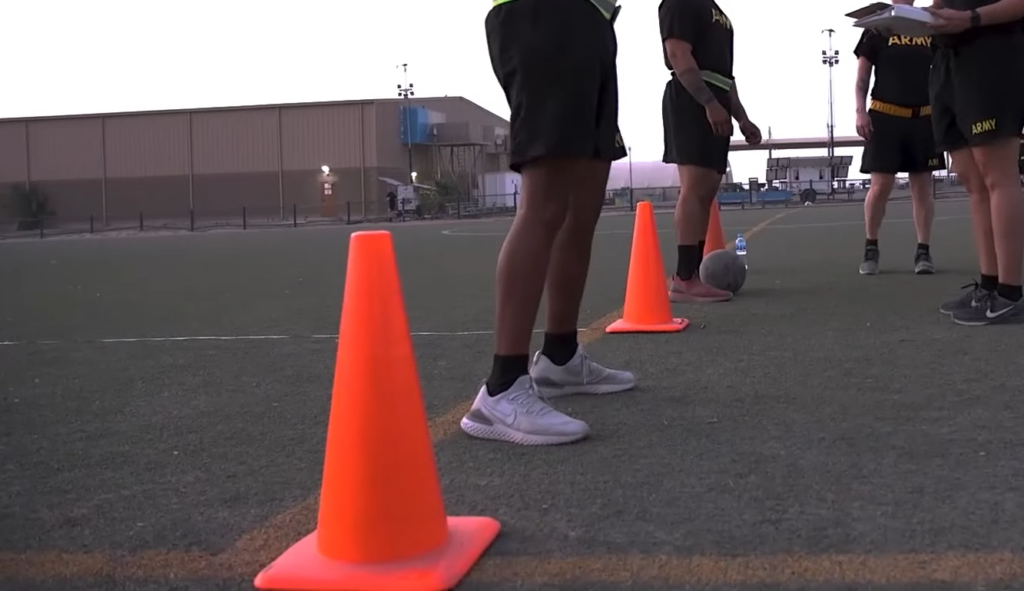
To accommodate all events simultaneously, a large, flat field is ideal. This setup allows multiple soldiers to partake in different events concurrently, optimizing the use of time and space. Furthermore, the equipment must be of high quality and uniformly standardized to ensure every soldier is tested under equal conditions. This standardization includes calibrated weights for the deadlift and precisely measured distances for running events.
Weather Conditions
Weather plays a pivotal role in the scheduling and execution of the ACFT. Since the test is primarily conducted outdoors, optimal conditions are essential for the accuracy of results and the safety of participants. Extreme weather conditions, such as heavy rain, high winds, or extreme temperatures, can significantly impact the performance of soldiers and may lead to injuries.
Commanders and test administrators must be vigilant and flexible, ready to adjust schedules based on weather forecasts. In some cases, this might mean postponing the ACFT to ensure the safety and well-being of all involved [2]. Alternatively, if resources permit, conducting the test in an indoor facility could mitigate weather-related issues, although this may not be feasible for all units due to space and equipment limitations.
Timeline and Soldier Throughput
Efficiently managing the timeline and throughput of soldiers is crucial for the smooth execution of the ACFT. The test is designed to be completed within a specific period, typically requiring about 50 minutes to an hour per soldier, including setup and recovery time. To accommodate entire units, the ACFT can be organized in waves or staggered starts, ensuring that as one group completes an event, another can begin.
This logistical challenge requires careful planning and coordination. Units must determine the optimal number of testing lanes and equipment setups to maximize throughput without sacrificing safety or the integrity of the test. Additionally, allowing adequate time for rest and recovery between events is essential, as it directly affects performance and the overall health of the participants.
Support Staff
The successful administration of the ACFT hinges on the presence of a well-trained and motivated support staff. This team includes graders, safety officers, setup and breakdown crews, and medical personnel. Each member plays a critical role in ensuring the test runs smoothly and safely.
Graders must be thoroughly familiar with the standards and scoring for each event to provide consistent and fair assessments of performance. Safety officers oversee the correct execution of events, intervening when necessary to prevent injuries. The setup and breakdown crews are responsible for ensuring that the equipment is correctly configured and promptly cleared away, maintaining the schedule’s integrity. Lastly, medical personnel must be on hand to address any injuries or health concerns that arise during the test.
ACFT 3.0 Standards On the Field:
20 Fully Equipped Lanes
One of the most significant changes in the ACFT 3.0 is the requirement for 20 fully equipped lanes. These lanes are designed to accommodate multiple soldiers at once, increasing the efficiency of the testing process while maintaining safety and fairness. Each lane is equipped with all necessary equipment for the six events of the ACFT: the 3-repetition maximum deadlift, standing power throw, hand-release push-ups, sprint-drag-carry, leg tuck, and the 2-mile run [3].

Having 20 fully equipped lanes allows for simultaneous testing, reducing the time taken for each soldier to complete the test. It also ensures a standardized testing environment, providing every soldier with the same conditions and equipment, thereby ensuring a fair comparison of results across different units.
Grass/Turf Field
The ACFT 3.0 requires a grass or turf field. The rationale behind this requirement is to simulate real battlefield conditions as closely as possible. A grass or turf field provides a more realistic training environment compared to a concrete or asphalt surface.
The use of a grass/turf field also minimizes the risk of injury during the test. The softer surface reduces impact on the joints during running and jumping activities and provides a more secure grip during the sprint-drag-carry event. It’s an essential component of the ACFT 3.0, ensuring that soldiers are tested in conditions that reflect what they might face on the battlefield.
2 X Rogue Pull-Up Rigs
The ACFT 3.0 has incorporated the use of 2 x Rogue pull-up rigs into its field standards. These rigs are used for the leg tuck event, which tests a soldier’s core and upper body strength. The Rogue pull-up rigs are renowned for their durability and stability, ensuring that soldiers can perform the leg tuck safely and effectively.
The use of two rigs allows for more soldiers to be tested at the same time, increasing the efficiency of the testing process. It also provides a standardized piece of equipment for all soldiers, ensuring fairness in the testing process.
2-Mile Run Course
Finally, the ACFT 3.0 includes a 2-mile run course. This long-distance run is designed to test a soldier’s cardiovascular endurance, a critical aspect of physical fitness on the battlefield. The 2-mile run must be completed on a flat, measured course that allows for accurate timing and scoring.
The 2-mile run course is usually marked out on the grass/turf field, providing a consistent surface that minimizes the risk of injury. This event is a crucial part of the ACFT 3.0, as it tests a soldier’s ability to maintain a high level of physical exertion over a prolonged period, a skill that is often required on the battlefield.
Do the Standards Require Doing The ACFT in the Rain?
Understanding ACFT Standards
The ACFT standards are meticulously designed to ensure a fair and equitable assessment of a soldier’s physical fitness, irrespective of their unit, location, or role within the Army. These standards focus on the uniform administration of the test, including equipment specifications, event procedures, and scoring. However, they also allow for a degree of flexibility regarding environmental conditions to ensure the safety and well-being of soldiers while maintaining the test’s integrity and objectives.
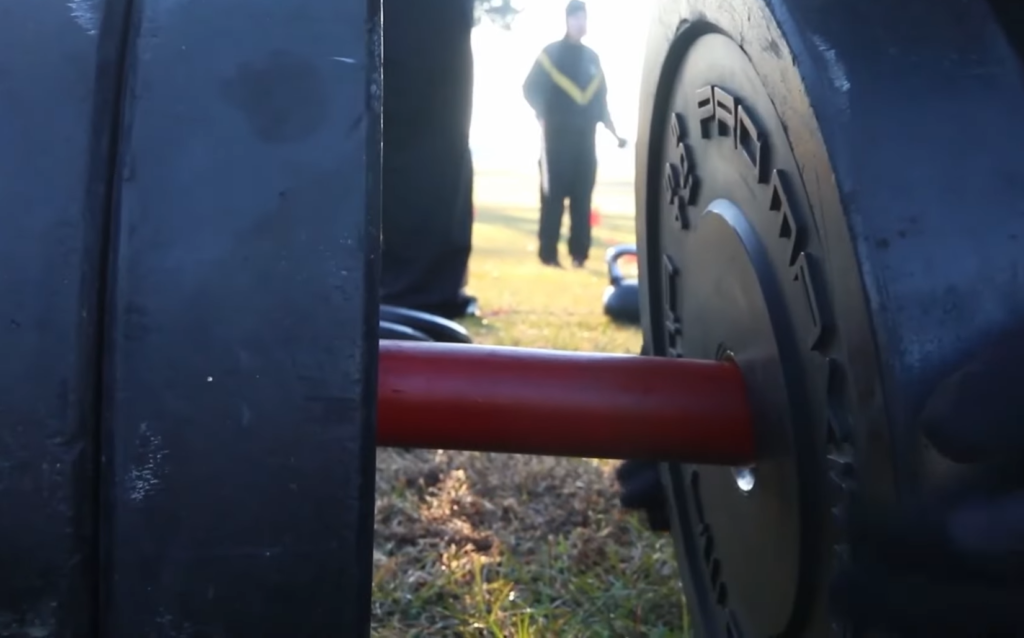
Weather Considerations and Flexibility
One of the core tenets of military training and operations is adaptability, and the ACFT is no exception. While the test is ideally conducted under favorable weather conditions to ensure accurate measurement of soldiers’ physical capabilities, the reality of military operations often involves performing under less-than-ideal circumstances. Consequently, the ACFT standards do not explicitly prohibit conducting the test in the rain. Instead, they emphasize the importance of safety and the judgment of commanders and test administrators.
When faced with adverse weather conditions, commanders must make a critical decision: proceed with the ACFT or reschedule. This decision hinges on several factors, including the intensity of the rain, the potential impact on safety and performance, and the availability of alternative dates or indoor facilities. Light rain may not necessitate postponement, provided that the test area remains safe for all events [4]. However, heavy rain, which can lead to slippery surfaces, reduced visibility, and increased risk of injury, may warrant delaying the test.
The paramount concern during the ACFT, or any military training activity, is the safety of the soldiers. Conducting the test in the rain introduces several safety risks, including slippery surfaces that could result in falls during the sprint-drag-carry event or the two-mile run. Equipment, such as barbells for the deadlift event, may become more difficult to grip securely, increasing the risk of accidents. The safety officers and test administrators play a crucial role in assessing these risks and implementing measures to mitigate them, such as ensuring proper drainage of the test area and providing non-slip mats where feasible.
The Impact on Performance and Fairness
Beyond safety, conducting the ACFT in the rain can affect soldiers’ performance. Wet conditions may lead to slower times, lower scores, and, potentially, an unfair assessment of a soldier’s physical capabilities. This variability contradicts the goal of standardized testing conditions to ensure fair comparison and evaluation across the Army. Therefore, when adverse weather significantly impacts the ability to perform the test accurately, rescheduling becomes a necessary consideration to uphold the principles of fairness and equity.
Logistical Considerations and Command Decision
The decision to conduct the ACFT in the rain is not taken lightly and involves careful consideration of logistical aspects. Rescheduling the test can be challenging, given the need to coordinate among large numbers of soldiers, the availability of testing sites, and the overall training calendar. Commanders must weigh the immediate need to complete the fitness assessment against the potential risks and impacts of adverse weather conditions. This decision-making process underscores the importance of flexibility and adaptability within military operations, reflecting the unpredictable nature of real-world combat and deployment environments.
Raining When You Show Up for ACFT: Do It or Postpone?
Military operations often unfold under less-than-ideal conditions, underscoring the importance of adaptability and resilience. The capacity to perform in various environmental conditions is integral to military readiness. Thus, the occurrence of rain on the day of the ACFT poses a real-world challenge, testing not just physical prowess but also the adaptability of the soldiers and the decision-making skills of their leaders.

Safety: The Paramount Concern
[tds_warning]The foremost consideration in deciding whether to proceed with the ACFT in the rain is safety. Slippery conditions increase the risk of injuries during high-intensity events like the sprint-drag-carry and the two-mile run. Equipment used in events such as the deadlift can become hazardous if wet, posing a risk to the participants. Safety officers and test administrators must evaluate the risk level, considering factors such as rain intensity, field conditions, and the availability of measures to mitigate these risks (e.g., non-slip mats or alternative indoor venues).[/tds_warning]
Performance and Fairness Can Be Doubtful
Weather conditions can significantly affect performance. Rain can lead to slower times in running events, potentially lower scores in activities requiring grip strength, and generally more challenging conditions for all participants. These variations can compromise the fairness of the test, as part of the ACFT’s objective is to provide a standardized assessment of physical fitness across the Army. Leaders must consider whether the conditions would unfairly disadvantage some soldiers over others.
Logistical Considerations
Postponing the ACFT due to rain is not a decision made lightly, given the logistical complexities involved in rescheduling. The coordination of soldiers, equipment, and testing locations requires meticulous planning. The impact on training schedules, operational commitments, and the potential backlog of soldiers needing to complete the ACFT must be carefully weighed. Commanders and administrators must balance these logistical challenges with the imperative to conduct the test under conditions that ensure safety and fairness.
Morale and the Message Sent
The decision to proceed with or postpone the ACFT in the rain also sends a potent message about the unit’s values and priorities. Opting to continue may underscore the importance of readiness under any conditions, aligning with the ethos of adaptability and resilience. Conversely, choosing to postpone in the interest of safety and fairness can reinforce a commitment to the well-being of soldiers and the integrity of the assessment process.
Making the Call: Criteria for Decision-Making
In deciding to proceed with or postpone the ACFT due to rain, commanders and test administrators should consider several criteria:
- Safety Assessment: Evaluate the risk of injury based on current and forecasted weather conditions, the state of the testing field, and available safety measures;
- Performance and Fairness: Consider whether the rain would create inconsistencies in performance assessment that could affect the fairness of the test;
- Logistical Feasibility: Assess the practical implications of postponing the test, including the availability of alternative dates or locations and the impact on the unit’s schedule;
- Morale and Unit Cohesion: Reflect on the potential impact of the decision on soldiers’ morale and the message it conveys about the unit’s values;
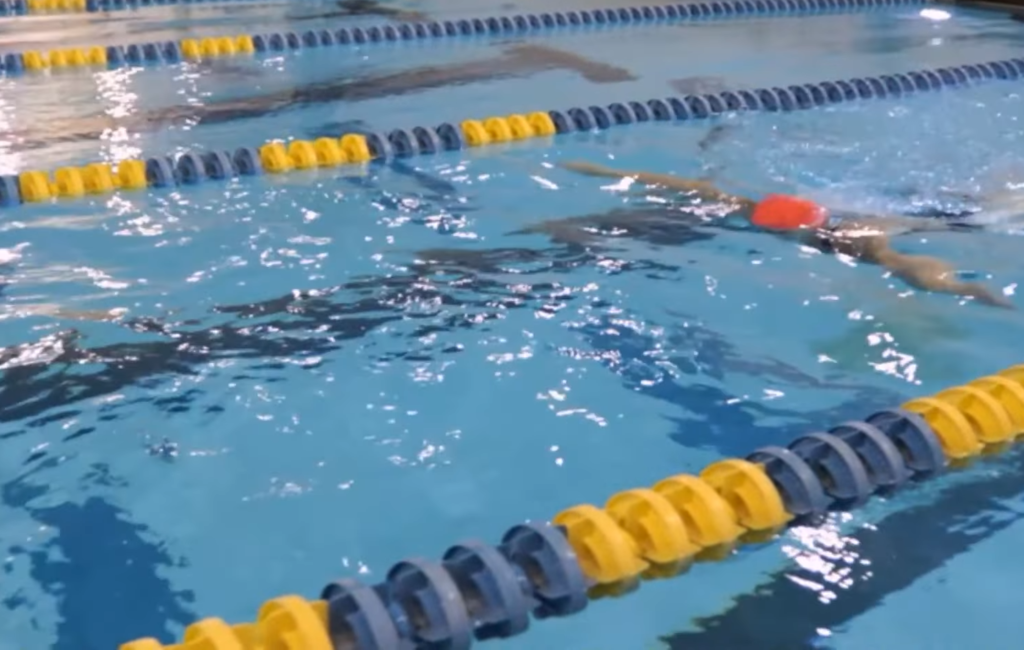
FAQ:
1. What are the conditions for the ACFT field?
The ACFT field must be flat and void of significant obstacles to ensure the safety and fairness of the test. The field should accommodate the six events’ spatial requirements, with sufficient room for the sprint-drag-carry lanes, a designated area for the standing power throw, and space for the leg tuck and hand-release push-ups. Additionally, the field must have a track or a measured, flat area for the two-mile run.
2. Can you do the ACFT indoors?
Yes, the ACFT can be conducted indoors if the facility meets the space requirements for all six events and adheres to the standard conditions for testing. This includes adequate space for the sprint-drag-carry, deadlift stations, and an area for the two-mile run, which may be substituted with an equivalent cardiovascular event if space does not permit a traditional run.
3. Can you change shoes during the ACFT?
Yes, participants are allowed to change shoes during the ACFT. This flexibility accommodates the different demands of the events, such as requiring more stable shoes for the deadlift and lighter, more agile footwear for the two-mile run. However, any change in equipment should not unduly delay the test’s administration.
4. How can I prepare for ACFT at home?
To prepare for the ACFT at home, focus on exercises that improve strength, endurance, and agility. For strength, practice deadlifts, squats, and push-ups. For the sprint-drag-carry, interval training can be beneficial. To prepare for the leg tuck, incorporate planks and pull-ups into your routine. Running or cycling can help build endurance for the two-mile run. Many of these exercises do not require gym equipment and can be modified using body weight or household items.
5. How heavy is the ACFT ball?
The ball used in the standing power throw event of the ACFT weighs 10 pounds (approximately 4.54 kilograms). This event tests the explosive power and balance of the participant, requiring them to throw the ball backward over their head for distance.
6. Can you do ACFT in the rain?
Yes, the ACFT can be conducted in the rain, provided that safety conditions are met and the performance of the soldiers is not unduly compromised. Commanders and test administrators should assess the field’s condition, the intensity of the rain, and potential safety hazards before proceeding. If the conditions are deemed unsafe, the test should be postponed.
7. Can you do ACFT in the snow?
Conducting the ACFT in the snow is generally not recommended due to the increased risk of injury and the potential impact on the fairness of the test. Slippery conditions and cold temperatures can significantly affect performance. If snow is present, commanders should consider postponing the test or seeking an indoor alternative if feasible.
8. Can you perform ACFT on a hot summer day?
The ACFT can be performed on a hot summer day, but precautions must be taken to prevent heat-related illnesses. Adequate hydration, allowing for acclimatization, and monitoring weather conditions are crucial. If the heat index reaches dangerous levels, it may be necessary to reschedule the test for a cooler part of the day or to find an indoor alternative.
Useful Video: Train in the Rain | 4th Regiment, Advanced Camp | CST 2023
References:
- https://cdn.ymaws.com/www.roa.org/resource/resmgr/rv/2020october/ACFT.pdf
- https://www.reddit.com/r/army/comments/10wjo5i/acft_in_the_rain_policyguidance/
- https://fromthegreennotebook.com/2021/08/23/lessons-learned-in-large-scale-acft-testing/
- https://www.rallypoint.com/answers/raining-when-you-show-up-for-apft-run-it-or-postpone





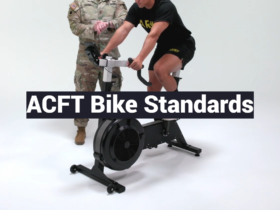
Leave a Reply